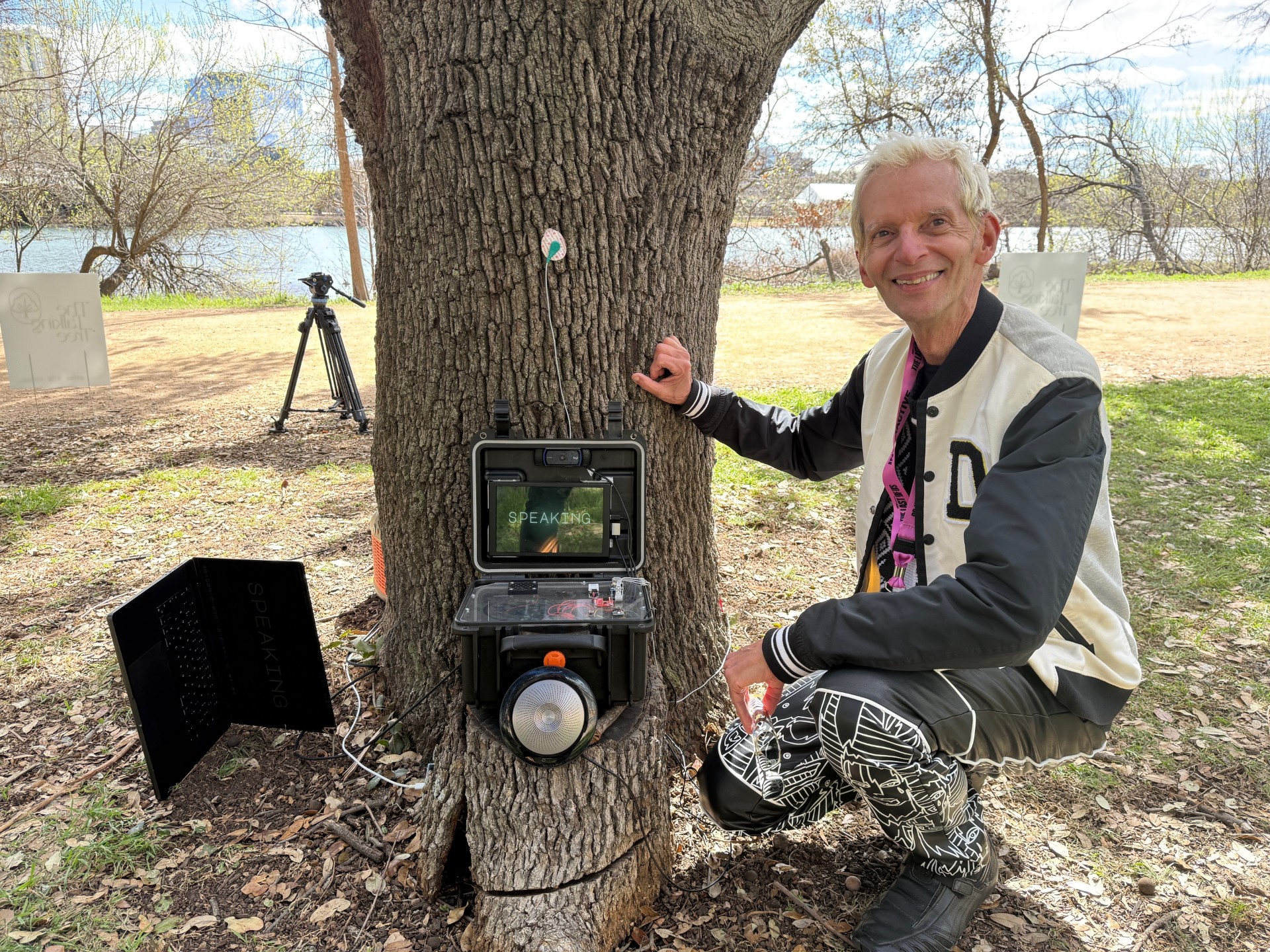One of the treats that UK House at SXSW offered to Austin was a ‘talking tree.” Anyone passing along the hike & bike trail at the foot of Guadalupe Street might have been startled to see people talking to a tree. Even more remarkable, it was talking back!
During a visit to the tree, I spoke with Evan Greally of the creative agency Droga5; it is headquartered in New York City, with offices in London, Dublin and Tokyo. Greally is Head of Creative Tech & Innovation at the Dublin location.
“It all started with a tiny mint plant named Eight,” he said. “Originally I had the idea that if we were able to talk to nature, could we feel closer to it? So I started with the mint plant in my laboratory and everyone really got connected to the plant. I heard about a company called Agency for Nature: their client is nature and they asked if I could make this work on a tall tree.”
This led to connecting electrodes to a 150-year-old horse chestnut tree in Morden Hall Park in south London. It turns out the tree had lots to say. A younger tree was selected here in Austin.
“We’ve connected multiple environmental sensors directly to a 50-year-old Live Oak along the Ann and Roy Butler Hike and Bike Trail in Austin, capturing real-time data—temperature, humidity, soil moisture, soil PH, air quality, sunlight, UV levels, and subtle electrical signals from three electrodes placed on its trunk,” explained Greally. “These electrodes detect interactions such as human touch, proximity, or animals like birds landing on branches.
“By correlating these electrical signals with environmental data (such as moisture, soil PH, temperature, and sunlight), we’re training our local AI to recognize patterns, allowing us to understand exactly when and why the tree experiences sensations like calmness or stress. This data feeds directly into a locally hosted Large Language Model (LLM), trained specifically on detailed tree knowledge and historical weather data from the area dating back to 1979.
“This gives the tree a genuine conversational voice, enabling it to authentically express its immediate sensations, moods, and experiences. All processing happens locally and sustainably on a Mac Mini, minimizing environmental impact. The result is a uniquely thoughtful, interactive connection with nature.”
In my conversation with the tree, it seemed eager to learn and communicate. “Would you like to ask me something specific. I’m here to listen, and share what I can,” said the Live Oak in a female voice. I asked an astronomical question: “When you look up at the sky at night, what do you see?”
“I don’t see like you might, but I feel the coolness and stillness of night. The stars, from what I’ve heard, are beyond my leaves. I imagine them as quiet mysteries above me.”
Even though the response was translated, in a sense, from tree language to English, via an AI, the answer was profound. Describing stars as “quiet mysteries” is worthy of a human poet.
Next time you pass by a tree that looks particularly interesting, don’t be afraid to speak. You won’t hear an answer, but the tree might just understand. Here is the website for the project:
https://www.thetalkingtree.co.uk/
Photo by Evan Greally: Dr Cunningham with the talking tree in Austin.
